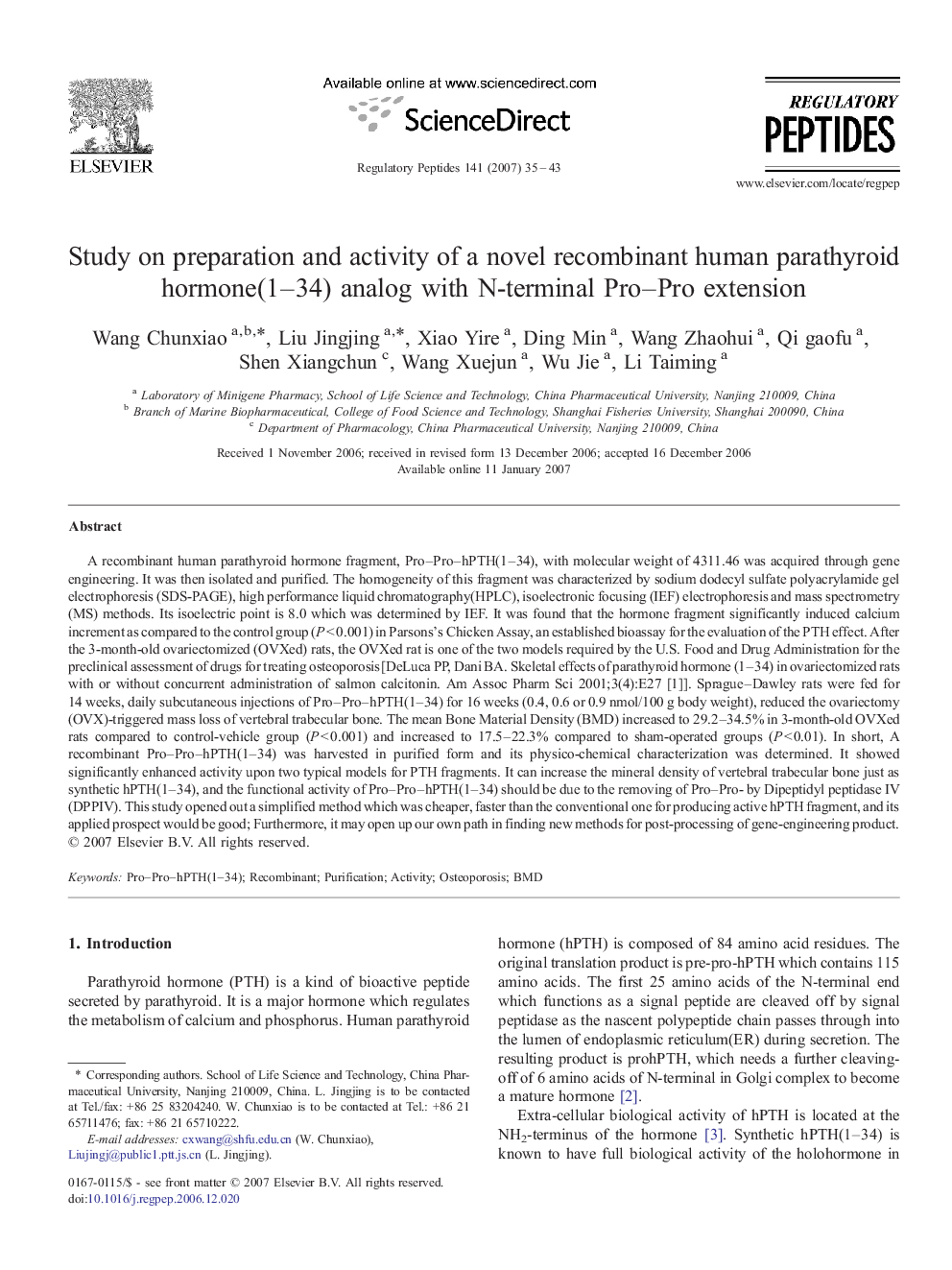| Article ID | Journal | Published Year | Pages | File Type |
|---|---|---|---|---|
| 2023292 | Regulatory Peptides | 2007 | 9 Pages |
A recombinant human parathyroid hormone fragment, Pro–Pro–hPTH(1–34), with molecular weight of 4311.46 was acquired through gene engineering. It was then isolated and purified. The homogeneity of this fragment was characterized by sodium dodecyl sulfate polyacrylamide gel electrophoresis (SDS-PAGE), high performance liquid chromatography(HPLC), isoelectronic focusing (IEF) electrophoresis and mass spectrometry(MS) methods. Its isoelectric point is 8.0 which was determined by IEF. It was found that the hormone fragment significantly induced calcium increment as compared to the control group (P < 0.001) in Parsons's Chicken Assay, an established bioassay for the evaluation of the PTH effect. After the 3-month-old ovariectomized (OVXed) rats, the OVXed rat is one of the two models required by the U.S. Food and Drug Administration for the preclinical assessment of drugs for treating osteoporosis [DeLuca PP, Dani BA. Skeletal effects of parathyroid hormone (1–34) in ovariectomized rats with or without concurrent administration of salmon calcitonin. Am Assoc Pharm Sci 2001;3(4):E27 [1]]. Sprague–Dawley rats were fed for 14 weeks, daily subcutaneous injections of Pro–Pro–hPTH(1–34) for 16 weeks (0.4, 0.6 or 0.9 nmol/100 g body weight), reduced the ovariectomy (OVX)-triggered mass loss of vertebral trabecular bone. The mean Bone Material Density (BMD) increased to 29.2–34.5% in 3-month-old OVXed rats compared to control-vehicle group (P < 0.001) and increased to 17.5–22.3% compared to sham-operated groups (P < 0.01). In short, A recombinant Pro–Pro–hPTH(1–34) was harvested in purified form and its physico-chemical characterization was determined. It showed significantly enhanced activity upon two typical models for PTH fragments. It can increase the mineral density of vertebral trabecular bone just as synthetic hPTH(1–34), and the functional activity of Pro–Pro–hPTH(1–34) should be due to the removing of Pro–Pro- by Dipeptidyl peptidase IV (DPPIV). This study opened out a simplified method which was cheaper, faster than the conventional one for producing active hPTH fragment, and its applied prospect would be good; Furthermore, it may open up our own path in finding new methods for post-processing of gene-engineering product.
